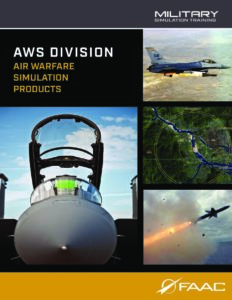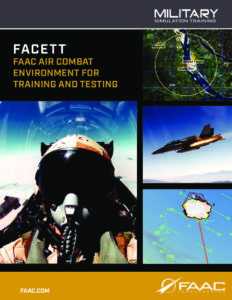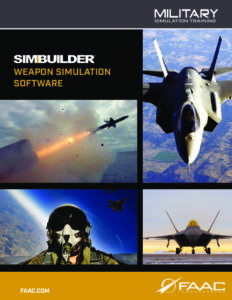ZAP relies on faster-than-real-time 5-DOF embedded weapon simulations to determine trajectory parameters. The ZAP trajectory simulations closely match the manufacturer’s engineering 6-DOF reference simulations, resulting in highly accurate display information over the entire flight envelope. ZAP provides reliable shoot cue information and allows a meaningful allowable steering error to be displayed. After launch, ZAP computes the current time to impact using actual tracked target maneuvers while continually assessing the shot quality to provide an indication of predicted endgame success.
From the initial F-15 implementation, ZAP has expanded to the F/A-18, F-16, F-35, F-22A, AV-8B, and various FMS platforms. FAAC also provides the F-35 Joint Strike Fighter the ZAP equivalent software package known as the Airborne Missile Trajectory Event Modeler (AMTEM). With the expansion to the various platforms, ZAP is often referred to as the Common Weapon Employment Zone (Common WEZ) software. Common WEZ goals include reduced costs to the taxpayer, common weapon employment cues across platforms, and most importantly providing the warfighter with the best possible information to take into combat.

Zone Acquisition Program (ZAP)
Our Zone Acquisition Program (ZAP) established and remains the standard for real-time weapon performance assessment. In the form of the Zone Acquisition Program Common Weapon Engagement Zone (or ZAP Common WEZ), it has been integrated into the Operational Flight Program system of all of U.S. fighter planes (including the F-15, F/A-18, F-16, F-35, and F-22), where it offers pilots real-time combat decision aids and visual cues. The ZAP system was a revolutionary leap in capability for the US warfighter in both training and the battlespace, replacing low-fidelity coefficient driven algorithms with accurate high-speed simulations, calculating dynamic launch zones (DLZ), launch acceptability regions (LAR), and missile launch envelopes (MLE) by display employment cues in real-time.
Simulation Features

F-15 Operational Flight Program ZAP Integration
In the early 1990’s FAAC integrated ZAP into the production F-15 operational flight program by using a Launch Zone Interface Working Group (consisting of aircrew, weapon manufacturers, The Boeing Company, and FAAC representatives), the entire weapon employment display concept was reviewed and replaced based upon the enabling ZAP technology. ZAP now provides the information to support Air-to-Air and Air-to-Ground weapon employment displays.

ZAP Integration
- Can be integrated with actual ZAP software used on tactical fighter jets to Re-create the weapon employment displays seen in the aircraft
- Can be configured with F-16, F-15, and/or F/A-18 E/F displays
- Threat WEZ: allows side-by-side comparison of ownship weapon capabilities versus selected target’s weapons for accurate assessment of first shot in a real-time dynamic environment

ZAP- A TACTICAL ADVANTAGE
From the initial F-15 implementation, ZAP has expanded to the F/A-18, F-16, F-16 Block 30, F-22A, and various FMS platforms. FAAC also works with Raytheon to provide the F-35 Joint Strike Fighter the ZAP equivalent software package known as the Airborne Missile Trajectory Event Modeler (AMTEM). With expansion to the various platforms, ZAP is often referred to as the Common Weapon Employment Zone (Common WEZ) software. Common WEZ goals include reduced costs to the taxpayer, common weapon employment cues across platforms, and most importantly providing the warfighter with the best possible information to take into combat.
- AIM-120 (A/B/C3/C4/C5/C6/C7)
- AIM-7 (F/M/MH)
- AIM-9 (L/M)
- AIM-9X (Blk I/Blk II)
- AIM-9P
- AIM-9S
- AIM-9N
- AGM-130 (A,C) GBU-15 (S,L)
Latest News and Videos
Learn more about ZAP Missile Launch Envelope
FAAC’s Zone Acquisition Process (ZAP) software provides high-speed missile simulations capable of running much faster than real-time with limited resources.
or call us at 734-761-5836










